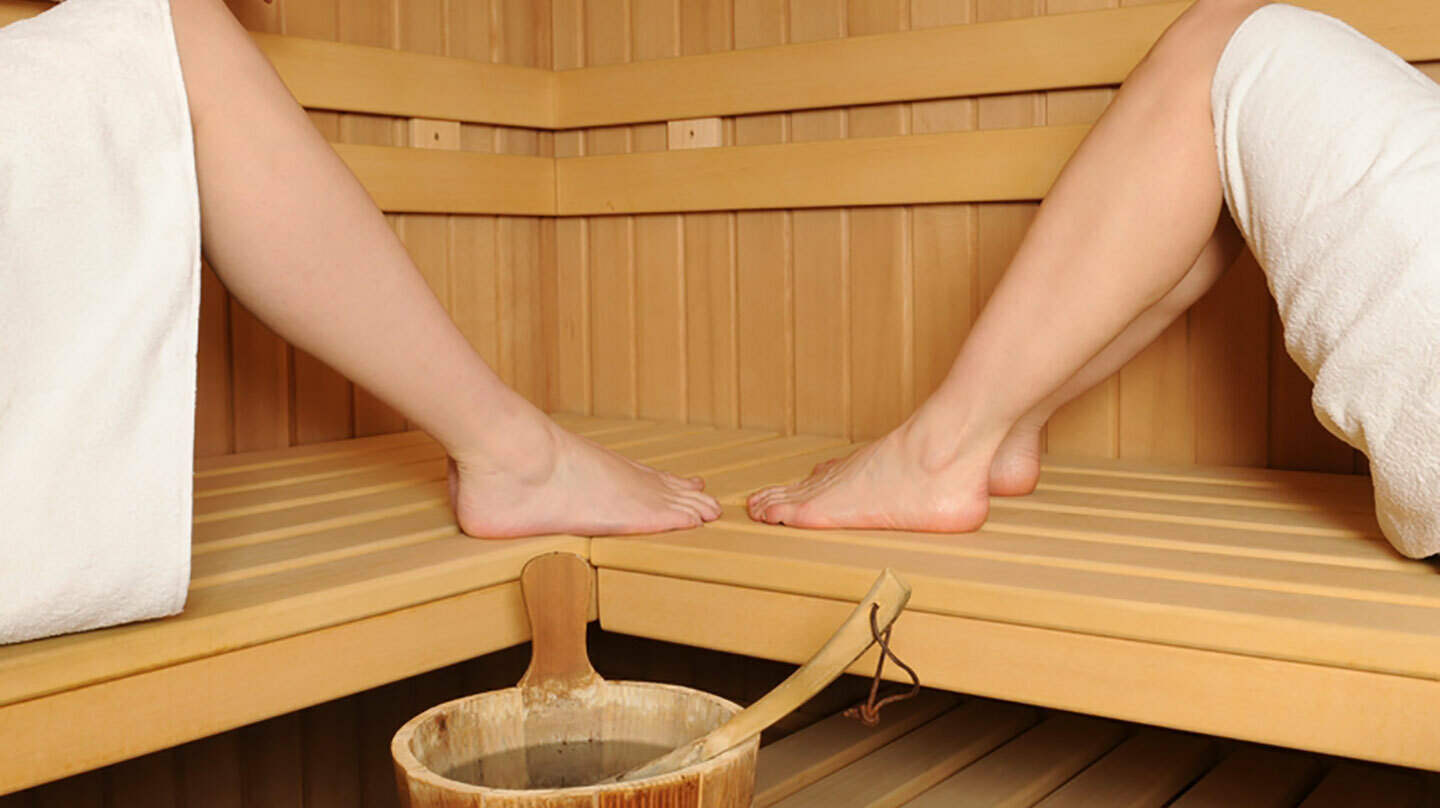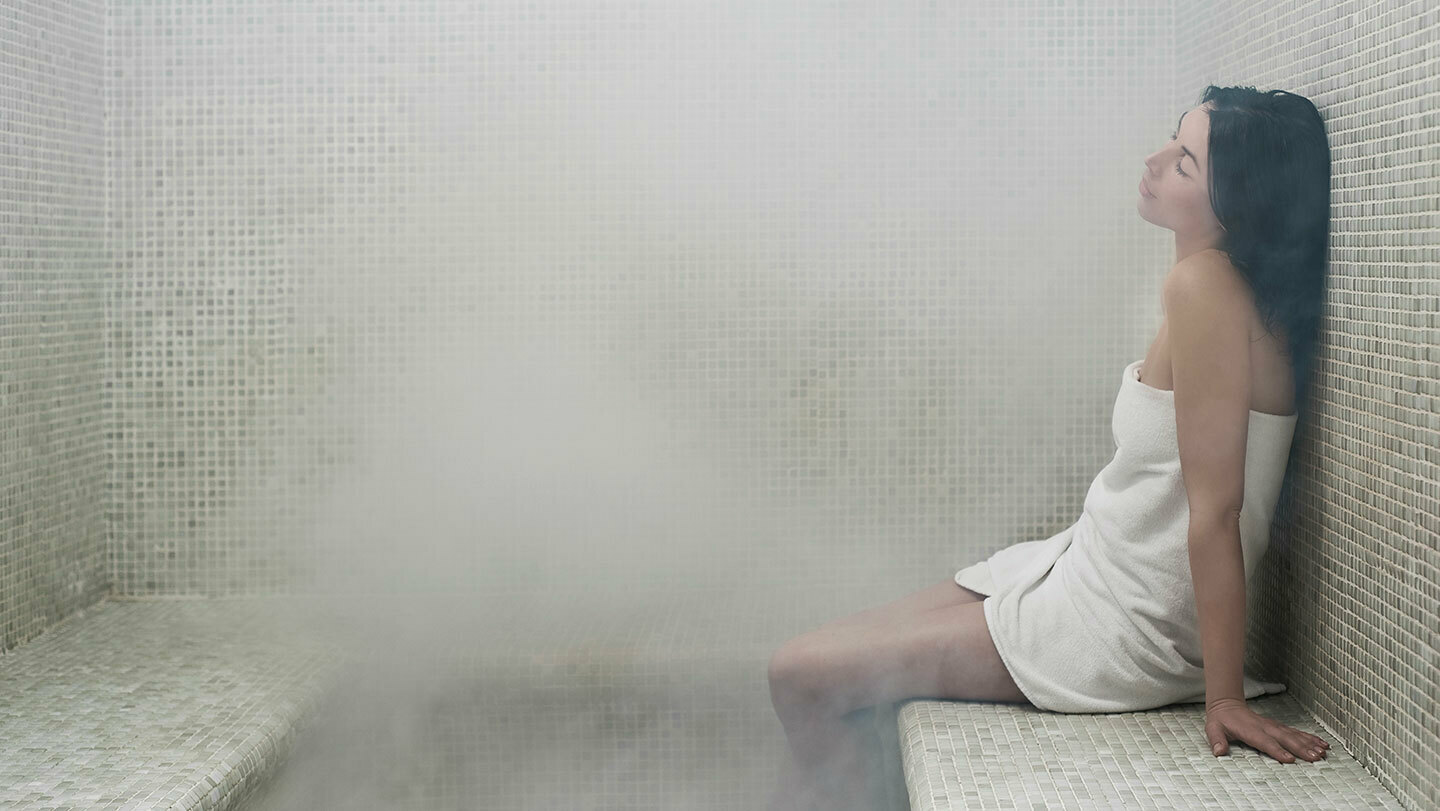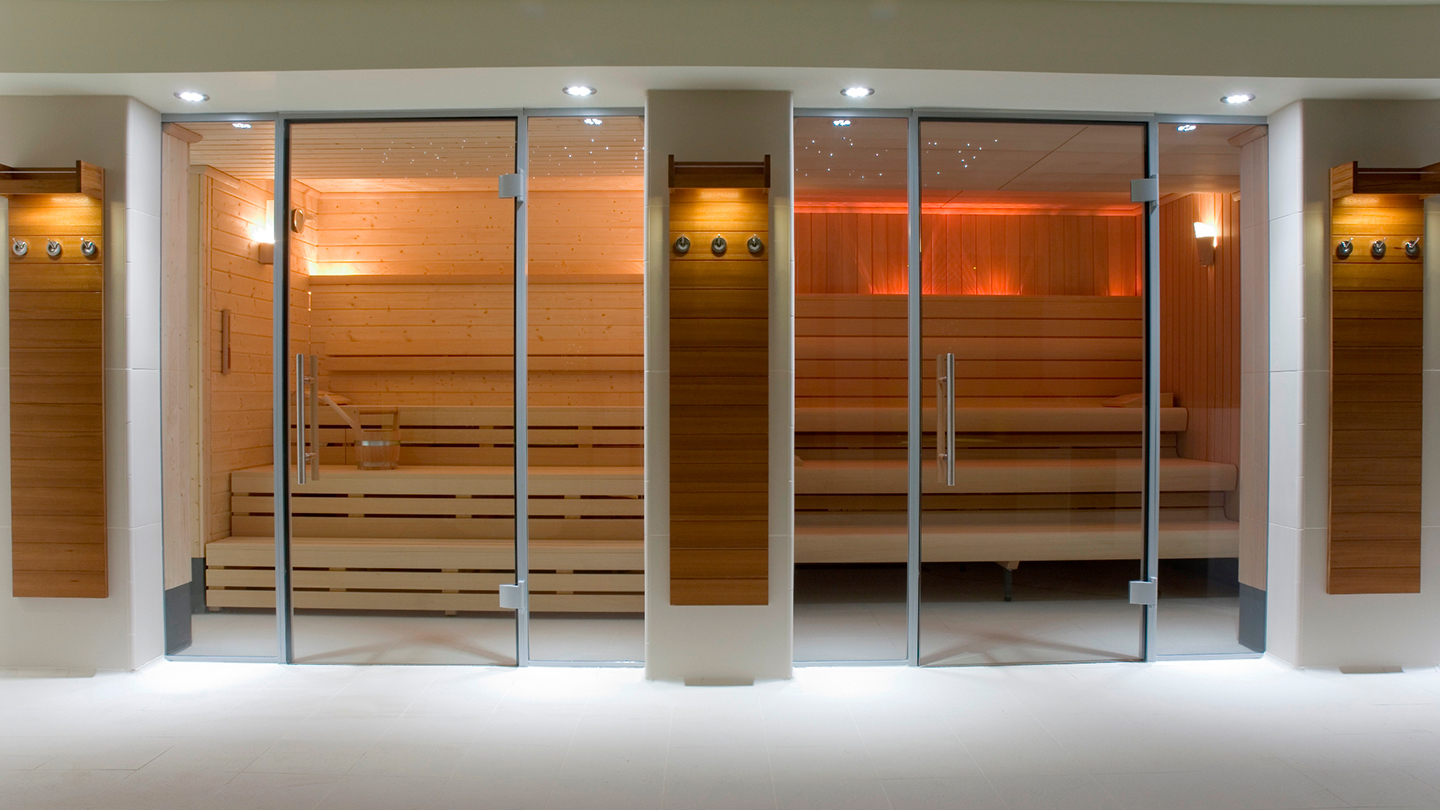A thermal suite is a series of rooms designed to take your body on a wet and dry, warm and cold temperature journey. It might consist of saunas, steam rooms, ice fountains, tropical and cold showers, and some heated ceramic loungers where you can relax at the end of your travels.
The concept of moving between different levels of heat and cold dates back to the ancient Greeks and Romans, and lots of thermal experience rooms take their name from these baths. The laconia was a very hot Greek steam bath, the frigidarium was a cool, unheated room in Roman baths.
Fast forward a few centuries, and records show “sweat bathing” was popular across Europe in the 1500s. There are also versions of steam rooms, normally known as sweat lodges, used by indigenous people in Central and North America.
The idea is that you use the several heat experiences to soothe, relax and detoxify your body, sometimes in advance of any spa treatments you have booked, or just as a restorative therapy on its own to chill you (literally) out. They can also revitalise you.
Heat treatments use wet or dry heat to improve circulation of blood and lymph to the skin, relaxing muscles and soothing your spirit. At a spa, heat treatments usually feature saunas, steam rooms or hot stones – also known as “thermotherapy”. The effect of heat is to cleanse, relax and relieve your body of aches and pains.
Heat treatments offer health and relaxation benefits for your whole body. In saunas and steam rooms, perhaps the best way to think about it is to compare it with having a fever. A fever is one of your body’s natural tools for healing itself. In many ways, heat treatments recreate your body’s own natural state of fever, and offer the same benefits. The difference of course is that steam rooms and saunas are a pleasant experience, and you don’t have to be ill to use them! The heat works deep into the muscles to relax and relieve them.

Heat treatments at a thermal spa can help provide the following health benefits:
In the UK it’s normal to visit a steam or sauna in your swimwear.
If you’re a little body shy it may be worth finding out beforehand what you’re expected to wear. Some spas offer single-sex facilities and you’re encouraged or welcome to be naked; in others you’ll be expected to wear a swimming costume. Some spas will provide towels for you to wear.
There are some things worth knowing before you book a thermal suite experience. You should avoid heat treatments if you:
Young children and older people are advised to avoid very hot treatments such as saunas. But whatever age you are, you can probably find a heat treatment that you will enjoy.
Drink plenty of water; you’ll sweat a lot, and at the same time as you’re cleansing your skin you’ll also be losing fluid. Keep topping up with fluids to avoid being dehydrated; this will make sure you really flush your system.
Watch the time! Fifteen minutes is the maximum time advised for some steam rooms and saunas. In others (a laconium, for example) you can stay for as long as an hour. If you don’t drink water or listen to your body when it says it wants a bit of cool air, you could end up feeling dizzy or sick. Only stay as long as you are comfortable.
To cool off after, or between heat treatments in the thermal suite, you can try an ice fountain – a room where you rub handfuls of ice flakes over your body – or a cold shower. Cooling brings your body temperature back to normal. Perhaps finish off with some mist or tropical rain showers, then relax.

Different types of steam room
A steam room is exactly what it sounds like: a room full of steam. But they can vary a great deal, from the suite of grotto-like chambers to steaming pools of a full-size Turkish hammam. In some smaller steam rooms, you will sit down in a tiled chamber/room and relax while the hot wet steam oozes over you.
You’d be wise only to stay for about 15 minutes as the heat is quite intense. In others, the term refers to suites of steam rooms and hydrotherapy pools where you can stay all day in warehouse-sized baths. Each room offers different temperatures and types of water and steam, promising different benefits.
Aroma grottos or Tropicariums are mildly-heated tiled steam rooms in which a scented oil such as eucalyptus or lavender is added to the steam to help you breathe more easily.
In many steam rooms there is a cold tap or hose so you can cool things down by running the water. You can usually sit or lie down in a steam room in tiled seats or alcoves.
There is an almost endless number of different kinds of steam room. The most common at UK spas are:
.jpg)
Different types of sauna
A sauna uses dry heat to boost your circulation, relax your muscles and soothe your mind. Saunas are generally associated with mountainous regions. They offer a more extreme, dry heat than steam rooms, with very hot rocks placed in the sauna.
You can usually regulate the temperature by pouring water over the hot rocks using a big ladle. Traditionally, you would complete your sauna experience by running out and rolling in snow. But there’s really no need for that when there are perfectly good showers and cool pools available in a spa.
As with steam rooms, the basic sauna concept is the same but there are many variations on the theme, largely depending on where in the world the sauna is in the spa.
Different types of sauna include:
Header image courtesy of K Spa at K West Hotel and Spa

Summer Spy
29th October 2015
Spy Likes:
Warmth and sunshine; spas which take me away to another country; fruit infused waters; beach-worth pedicures; deep tissue massages.
Spy Dislikes:
High footfalls; treatments that over promise and under deliver; heavy lunches; loungers drapped in used towels.
